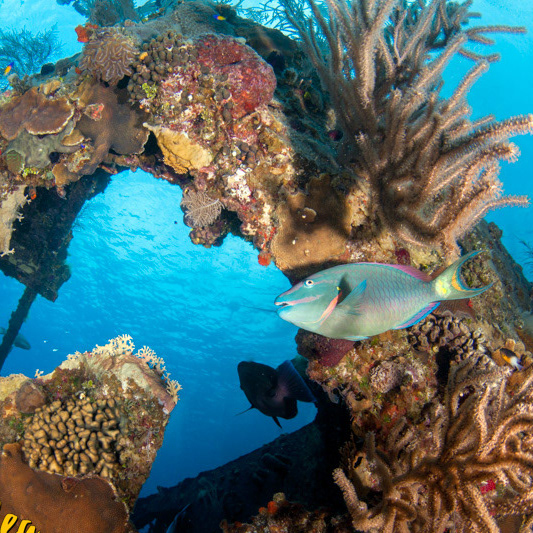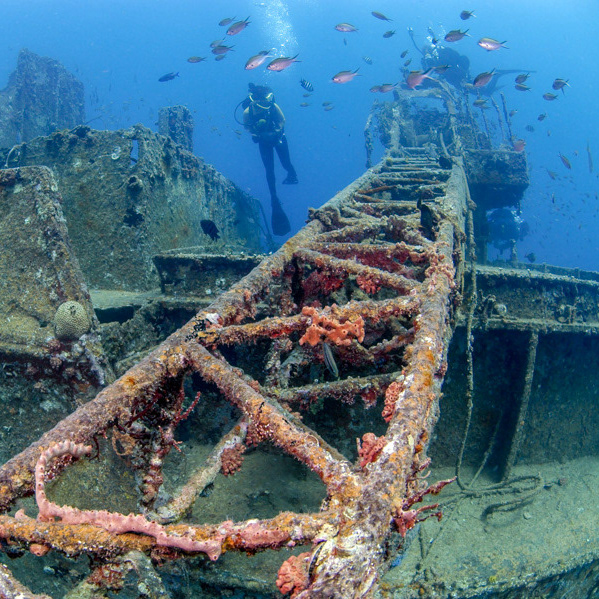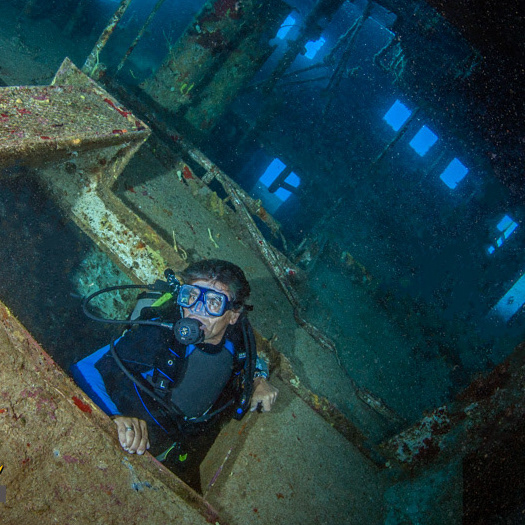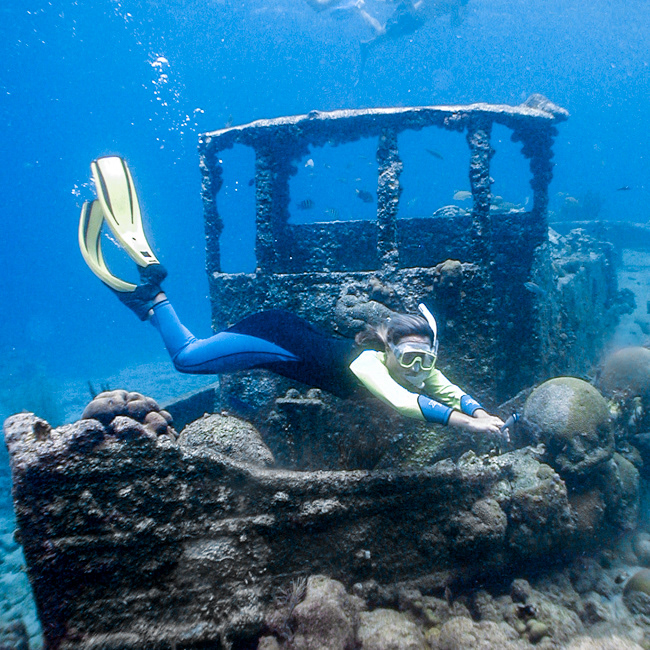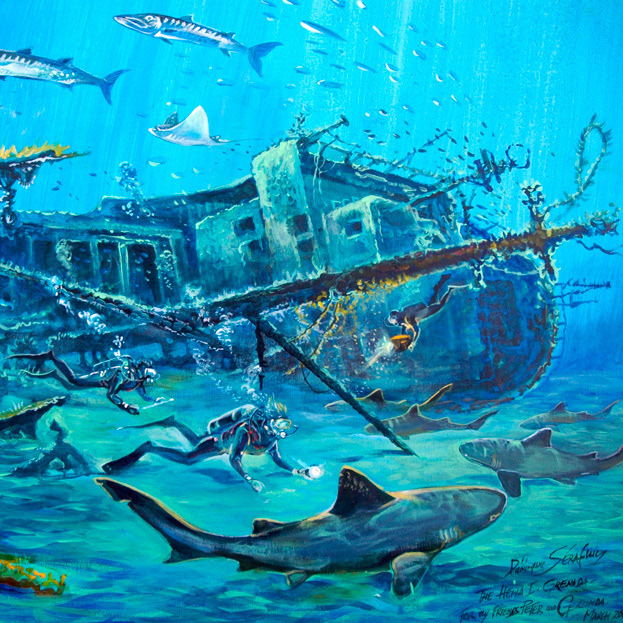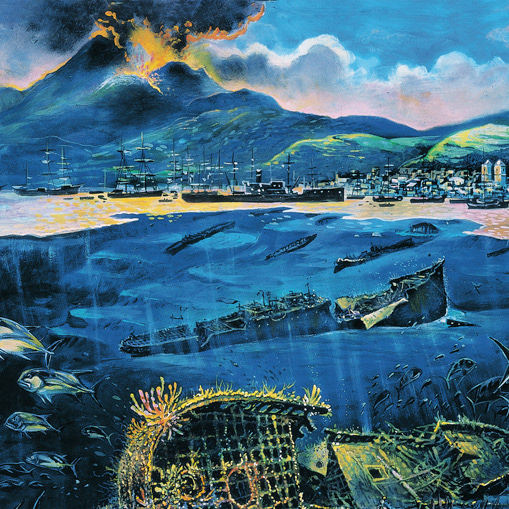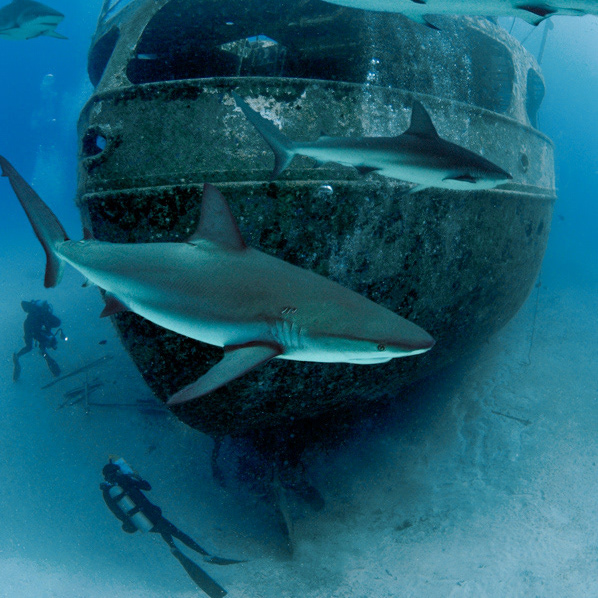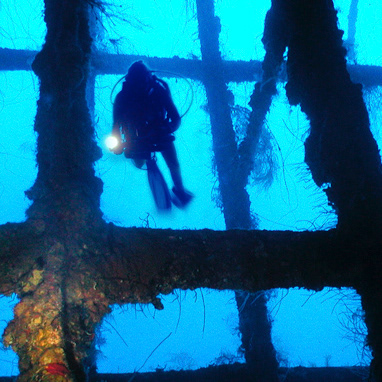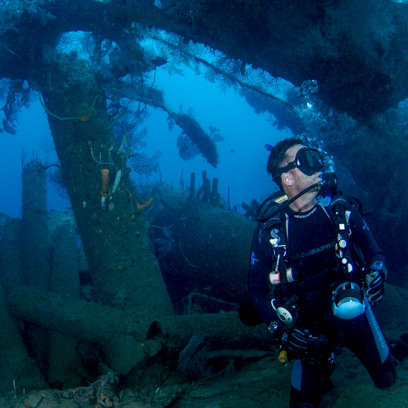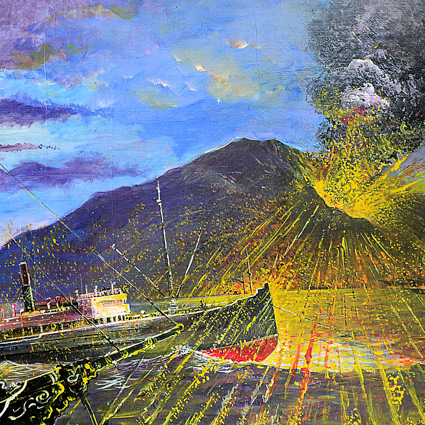Goliath Groupers on the M/V Castor - Boynton Beach, Palm Beach County FLORIDA by Cathy Salisbury
South of West Palm Beach in a community called Boynton Beach, is another wreck famous for its 20 - 30 resident goliath groupers who live on the wreck all year round. Its called The M/V Castor. During grouper spawning season, The Castor is one of the largest gathering sites and the numbers of goliath groupers on the wreck can jump well above 100.
On our dive boat were two enthusiastic Castor wreck junkies with over 500 dives on the wreck. For the last 5 years, they have been counting and physically measuring the groupers on the wreck. One that they call Wilbur is so accustomed to them that recently it let one of our friends remove a hook that was planted in the corner of his mouth.
A dive on the Castor is a bit of a technical dive. Farther away from the coast than the Anna Cecilia, the wreck is deeper and the current tends to be heavier. We were told that the conditions on the wreck are very variable and that no two dives on this wreck are the same. You never know what the visibility, current or water temperature is until you are down on the wreck.
Once at the wreck site, a diver jumped in the water with a scooter and fixed a descent line on the wreck. Shortly after, we jumped in and in heavy current, shaking like a flag in the wind, we went down the line to the wreck 110 feet below the surface on the sand.
The M/V Castor was a 240 foot Dutch freighter built in 1970. It was seized in 1999 by the US Coast Guard, carrying 10,000 pounds of cocaine hidden in a shipment of bagged sugar. The crew was arrested and the fate of the seized vessel open for negotiation. In the end, it was sunk in 2001 by the Palm Beach County Artificial Reef Program to concentrate fish for the Floridian fishing community. In the last 20 years, the wreck has been broken up by hurricanes. Now only the stern of the ship, covered by orange cup coral, stands upright and this is the groupers favorite place to seek refuge.
With a group of about 30 goliaths at the stern on the wreck, there isn’t much room for many more. The groupers seemed to be vying for the best place, where the current is the strongest. The goliaths allowed us to come along side and we spent precious minutes observing these magnificent creatures.
We decided to make our way towards the bow and we followed the debris laden deck towards the front, fighting the current the whole way. Another gang of groupers was up at the bow, this time surrounded by a cloud of small silvery fish. But helas, our dive time was short as we wanted to make a second dive on the wreck. So we headed back to the stern to join the rest of the divers for our ascent.
Unfortunately, during our surface interval, the weather conditions became too difficult to ensure our safety and recovery so instead of doing a second dive, we returned to the shelter of the coast and the marina.
Back at the marina, we continued to glean information. To date, Florida is the only place in the world where juveniles and adulthood are found in significant numbers. However, if stocks have rebuilt, this fish is not yet completely out of the woods.
The Florida Fish and Wildlife Conservation Commission is studying the possibility of “limited catches” of goliaths, on the pretext (unfounded) that these animals could be responsible for the decrease in fish and lobster stocks. They are proposing that 100 breeding goliaths could be taken each year for four years. However, many scientists concur that the current population would not last more than one, even two years after the opening of this regulated limit fishery.
One thing is clear: the goliath grouper is now an integral part of local underwater tourism. A 2-tank dive outing to see these amazing creatures costs $125. Thus, these groupers generate for an average dive operation, a few hundred thousand dollars annually. The economic stakes are high and the dive shops and divers are struggling for the protection of the goliath grouper. Thank goodness that in this case, ecology rhymes with economy. Long live these marvellous creatures!
Goliath Groupers on the M/V Castor - Boynton Beach, Palm Beach County FLORIDA by Cathy Salisbury

